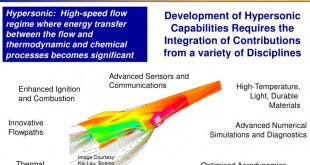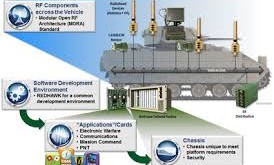The emerging battlefield is a multi-domain battlefield which shall include all the traditional domains of land, air and sea as well as Cyber, Space, Low Intensity conflicts, Information warfare including Psychological warfare and cognitive warfare shall be exploited by our adversaries simultaneously or in any desired combinations.
The response of this multidomain battlefield needs to be met with integrated multidomain response by developing capability to deliver effects across all domains. Therefore, there is need to develop new doctrines, strategies, tactics, capability and training for this multidomain environment.
Essentially, they are the synchronisation of aircraft, ground forces and vehicles, satellites and ships, their systems and all sources of data. Together they deliver a “complete picture of the battlespace” and empower personnel – in theatre or command – to “quickly make decisions that drive action” says major technology provider Lockhead Martin. Cyberspace is a critical element of this new age of combat; as the electromagnetic spectrum – a string of frequencies from radio to microwaves, visible light, X-rays and gamma rays which transmit data – may become with the likes of the US, UK and others looking ever more closely at it.
To ensure effective MDC2, however, a platform must be selected which can readily observe and communicate across the space, air, ground and surface domains. As NATO’s key airborne tactical BMC2 asset, the E-3As are the logical platform for future MDC2 operations. They are uniquely qualified to engage in multi-domain operations, as they already engage in air, ground and surface BMC2. The next evolution of the E-3A will expand its capabilities in the space domain and enhance many of its existing air, ground and surface abilities, to provide the technical capability for effective MDC2 in NATO 2025 and beyond.
other platfroms US DOD is looking are Unamnned Aerial systems(UAS) such as Gray Eagle
Gray Eagle-Extended Range UAS Upgraded for Multi-Domain Operations
General Atomics Aeronautical Systems, Inc. (GA-ASI) completed the first in a series of internally-funded Multi-Domain Operations (MDO) demonstrations using a company-owned Gray Eagle Extended Range (GE-ER) Unmanned Aircraft System (UAS). GE-ER is a long-range variant of the U.S. Army’s MQ-1C Gray Eagle UAS.
The flight series will continue in 2020 and demonstrate that a GE-ER equipped with long-range sensors and Air Launched Effects (ALE) is designed to Detect, Identify, Locate, and Report (DILR) targetable data to support Long Range Precision Fires (LRPF) systems.
Equipped with the combat-proven Lynx Block 30A Long Range Synthetic Aperture Radar/Ground Moving Target Indicator (SAR/GMTI), the GE-ER was able to detect military targets out to a range of 75 km. The Lynx SAR imagery produces precise coordinates with every image, cueing to aviation assets or enabling direct engagement with LRPF. The Lynx SAR has modes for Ground Moving Target Indicator (GMTI), Dismount Detection on the Dismount Moving Target Indicator (DMTI), Maritime Detection and Maritime Identification with Inverse Synthetic Aperture Radar (ISAR). This combination of modes supports MDO operations over land or sea in the Pacific and European theatres.
“Gray Eagle ER is a critical tool, along with the Army’s manned platforms, for operations in an MDO environment,” said David R. Alexander, president, GA-ASI. “We’re excited to show the capability Gray Eagle ER provides due to its increased endurance and range, with the addition of high Technology Readiness Level [TLR] long range sensors and ALE.”
All flights and future demonstrations will be controlled exclusively using GA-ASI Scalable Command & Control (SC2) software hosted on a laptop computer, drastically reducing the system’s logistical footprint and supporting the Army’s vision for interfaces to the aircraft from across the battlefield without the need for a Ground Control Station shelter or vehicle.
Demonstrations planned in 2020 include integration of additional long range and MDO relevant sensors, communications packages, and launching of ALE from the aircraft. Serving as an ALE mothership, the GE-ER will carry multiple ALEs with a variety of capabilities. The launching and controlling of ALEs from GE-ER could potentially increase the survivability and effectiveness of current and future manned aviation systems with intelligence, targeting, communications, jammers, decoys and kinetic effects.
GE-ER is a long-range variant of the U.S. Army’s MQ-1C Gray Eagle UAS. It provides the U.S. Army with increased endurance, more payload capacity to support future mission tasking, and considerable improvements in system reliability and maintainability.
In February 2022, General Atomics-Aeronautical Systems, Inc. (GA-ASI) began the first installation of factory upgrades to a Gray Eagle-Extended Range (GE-ER) Unmanned Aircraft System to enhance its capabilities to support Multi-Domain Operations (MDO). The U.S. Army-funded program includes two aircraft. Flight test and qualification will start later this year. The MDO upgrade follows a series of demonstrations that showcased GE-ER’s persistent stand-off survivability with stand-in capabilities and up to 40 hours of endurance that commanders can leverage in the MDO environment.
Chinese Yuan Wang 5
The Yuan Wang 5, the latest of China’s next-generation space-tracking vessels, was due to spend five days at the country’s Chinese built and leased Hambantota port. The Chinese marine research, satellite and ballistic missile vessel, Yuan Wang 5, is currently mapping Indian ocean bed 2000 kilometers (1100 nautical miles) south of Sri Lanka giving rise to the possibility of Beijing exploring a new sea route to Africa’s eastern seaboard by bypassing contested Malacca, Sunda, and Lombok Straits. The new route will completely avoid the shortest sea lanes of communication from South China sea to Persian Gulf and Gulf of Aden and take a longer route through Ombai Wetar Straits.
The ocean bed mapping also helps in anti-submarine operations as the equatorial waters are tricky due to significant differences between the surface and sub-surface temperatures.
The vessel monitors intercontinental ballistic missile, rocket and satellite launches and is a prime example of how warfighting is changing. Distributed, multidomain and joint all domain operations (MDO and JADO, respectively) are fast becoming the defining doctrines of this new era.
The strategic ship has become a bone of contention between India and China after the former voiced its concerns over the vessel being allowed to berth at Hambantota port by the Ranil Wickremesinghe regime.
References and Resources also include:
http://www.ga.com/ga-asi-begins-mdo-demonstrations-using-gray-eagle-er
 International Defense Security & Technology Your trusted Source for News, Research and Analysis
International Defense Security & Technology Your trusted Source for News, Research and Analysis


